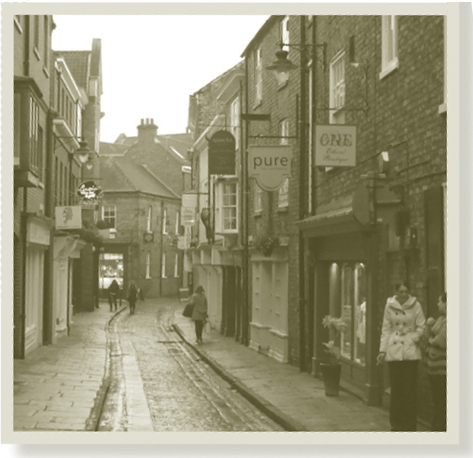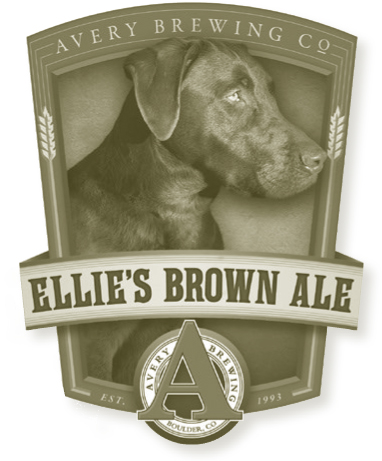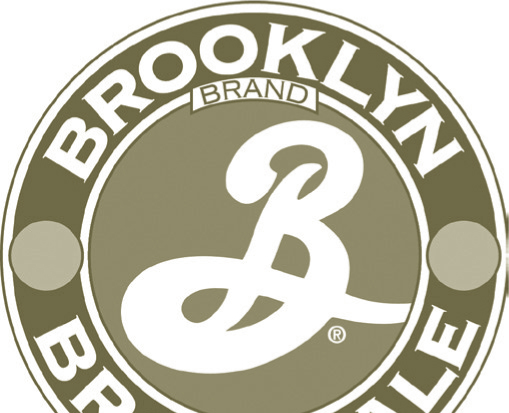
The humble brown ale is not a beer that excites passions. How could anything called “brown” rouse excitement? In the eyes of most of the beer-drinking world, a brown is regarded—when anyone bothers to regard it at all—as an anonymous, workmanlike pour. But as any good spy knows, the virtues of anonymity are located beneath the surface. Browns are actually one of the most diverse styles. Freed from the scrutiny and national pride of many more famous styles, browns are a great place for a brewer to express himself. They can be burly or slight, thick or thin, sweet as treacle or dry as a cracker. What gives the style coherence is the emphasis on rich malt flavors and aromas, and these the brewer can achieve through a number of clever tricks. One brown may have notes of Kona coffee, another of roasted almonds, yet another the richness of hot chocolate. The result is a beer that is soothing, comforting, and far more interesting than most drinkers appreciate. ■

Brown ales are rare in the country of their birth, but you might find one in a pub in the old city of York.
BROWN ALES ARE history’s fly on the wall, peering in on civilizations as distant as ancient Sumer. The act of malting was until recent centuries difficult to control, and browned, smoked, or charred malts led inevitably to brown beer. Ancestors to current Belgian, German, and Czech browns were brewed around Europe throughout the Middle Ages. Any of the brown beers in history might have been part of the lineage leading to what we call “brown ale” now, but it was the English variety that won out. Here we have John Milton’s famous “L’Allegro,” written in 1645:
And young and old com forth to play
On a Sunshine Holyday,
Till the live-long day-light fail,
Then to the Spicy Nut-brown Ale
Milton’s browns were remote in lineage from the modern version, however—Neanderthal ales doomed for extinction. The malting technique in Milton’s time involved drying barley over roaring fires; what resulted was a smoky, roasty brown malt. The beer it produced was, by contemporary accounts, not good. When breweries began to change their malting techniques to produce porter after the turn of the eighteenth century, the musty old browns began to die out. They were effectively extinct by 1800.
The revival came 100 years later, from the London brewery Mann, Crossman & Paulin, amid the fascination with sweet, light beers like milds and milk stouts. Riding the trend, the brewery introduced a bottle-only product called Manns Brown Ale, a beer of just 2.7% alcohol. Even by later standards, that would have been notably low strength, but this was well before the “great gravity drop” of the world wars (see page 149). Manns was therefore at the far end of the spectrum and, unsurprisingly, didn’t immediately set the world on fire. In fact, it took a couple decades and that gravity drop for the public to come around. In the 1920s, sales picked up sufficiently to spark a minor trend in brown ales.
During the same decade in England’s North, Newcastle Breweries released a brown ale of nearly twice the strength of Manns (4.7%). To modern American tastes, Newcastle Brown is a sweet beer and relatively weak. Compared to Manns and its imitators in the Roaring Twenties, it was dry and strong, setting it apart. In nearby Sunderland, England, Vaux produced a beer similar to Newcastle and later, Yorkshire’s Samuel Smith made yet another similar product. As the decades rolled along, these hallmark beers began to stand for two schools of brown ales: northern and southern. The beer writer Michael Jackson solidified their standing as different styles, and you still see the separation observed in places like the American Homebrewers Association’s style guidelines.
Although this distinction is common, it isn’t without controversy. Lots of browns were brewed in the twentieth century, and they blurred the line between the two styles. Contravening rules, mild, sweet browns were sometimes brewed in the North, and stronger, drier examples in the south. From time to time breweries even blew the lid off their kettles with big, booming browns north of 5.5% alcohol (booming for post–World War II Britain, anyway).
In recent decades, browns have dwindled even more precipitously than milds. Newcastle, the country’s biggest brown producer, now ships almost all of its product overseas. Samuel Smith makes a brown ale, as does Hook Norton, but these are the rare exceptions. Even CAMRA (the Campaign for Real Ale), the watchdog of British beer, doesn’t list brown ale as a native style.
In the United States, one of the earliest success stories in craft brewing was a brown: Pete’s Wicked Ale (see box, page 135). Founded in the mid-1980s, Pete’s grew to become the second-largest craft beer company in the U.S., all on sales of its flagship, an assertive, malty brown. Like many beers of that era, Pete’s Wicked began to lose market share as the market matured, leaving behind lighter or relatively sweeter beers. With the exception of Pete’s, brown ales have never enjoyed much of a following stateside. ■
LET US ASSEMBLE in our mind’s eye a representative sample of the beers with “brown” in their title. They have two or three qualities in common: color, clearly, but also an emphasis on malt flavor and the gentle fruitiness of ale yeast. From there they range broadly in strength, hoppiness, and relative sweetness. Can we sort them into any meaningful categories? We can, and will, but first we have to deal with generations of earlier attempts. Some of these appear in style guidelines, others on the odd beer bottle. It’s useful to know what they refer to.
The writer Michael Jackson was instrumental in popularizing this dichotomy between stronger, drier brown ales and less alcoholic, sweeter ones. The distinction seems to be giving way to a category of “English brown ales” within competitions. In either case, English browns are mild and malty, characteristic of the country that made soft malts and earthy hops famous.
Like other British styles adopted by Americans, browns quickly acquired a Yankee accent. Rather than looking too closely at the English originals, Americans just slotted browns in between ambers (another Americanism) and porters. Standard American brown ales generally weigh in at about 5% ABV and are accented toward malt richness. Texas homebrewers launched a variant style that has few commercial incarnations now—hoppy, roasty browns. They are the bigger, tougher brother to standard American browns. The current trend seems to be typified by beers like Brooklyn Brown: hearty all-barley beers that use Britain as an inspiration, not a model.
Robust browns, made at IPA strengths, weren’t invented in America—British brewers have made them periodically over the decades. But you’re far more likely to find them in San Diego now than in London. Some are darker versions of IPAs (Dogfish Head Indian Brown Ale), or the inevitable imperialized versions like Tommyknocker. Scandinavians, too, seem partial to imperial browns (consider Nøgne Ø, Bryggeri, Mikkeller).
As the Milton poem documents, “nut” has been used to describe brown ales for centuries. It appears that the term originally referred to the beers’ color, though, not their taste. However, in the U.S., brewers were beguiled by the idea of nut-flavored ales. Some darker malts, particularly in combination with earthy hops, offer a suggestion of nuttiness. Many American brewers highlight this note, but some go even further. Rogue, for example, adds hazelnut extract to its Brown Nectar. A number of others use the phrase “nut brown” as a synonym for “English-style,” which adds taxonomical confusion to the category of brown ales.
Despite the assorted categories and names, American breweries seem to have come to a broad agreement about what a brown should be. Although the British have more or less abandoned the style, Americans view brown ales as an artifact of English brewing. Most range between 4.5% and 5.5% ABV in strength, and their palates are tilted toward malts. Brewers favor English hops, which frame the malt notes with their earthiness. In fact, these American expressions are quite distinct from the ideal of a “traditional English brown” exemplified by Newcastle or Samuel Smith. As with “French” fries or “Canadian” bacon, brown ales seem to have become an American impression of what an “English” beer might be like. ■
The Rise and Fall of Pete’s Wicked Ale. The world of American brewing in 1980 was like a newly discovered, unpeopled continent. The first pioneers had landed, set up a beachhead, and were prepared to fan out and stake their claims. At that moment, none of them knew much about the continent, nor which places would later be considered prime real estate. Like little kings, they began planting flags: Fritz Maytag on the state called Steam Beer, Ken Grossman in Pale Aleland. In the Pacific Northwest, Pyramid and Widmer dueled over Weizenville.
One of the most successful companies was Pete’s Brewing, founded in 1986. The founder, Pete Slosberg, decided to stake a claim on—of all things—brown ales. It was an unlikely style, but then, so was Vienna lager, and Boston Beer had built the country’s first blockbuster craft beer around that style with Boston Lager. With Wicked Ale, Slosberg sketched the contours of the American version of the brown style: a russet, creamy ale of modest strength, a caramel-and-toast palate buttressed by a slight, earthy hop bitterness. It was not an aggressive beer even by the standards of the time, yet its color and body put it in sharp contrast to the longstanding American preference for thin, almost clear beer.
Remarkably, Pete’s Wicked Ale was a hit. Within a decade, Pete’s Brewing was the country’s second-largest craft brewery, had national distribution, and was even exported to Canada, Australia, and Europe. In 1995 Slosberg offered an initial public offering, and Pete’s appeared ready to solidify its position as a national company. It was a dangerous moment for craft brewing, though. Like Slosberg, many breweries expanded during the mid-to-late 1990s on the assumption that sales would continue to grow. They didn’t, and huge capital expenses put Pete’s in a tricky position. In 1998, Gambrinus, the parent company of Shiner, BridgePort, Trumer, and others, bought Pete’s. Despite new product releases and renewed focus on consistency, the brand never recovered.
Like so many boom towns in the early American West, Pete’s went bust. There were a number of structural flaws in the company’s strategy, but one can’t help thinking that the product itself was a major issue. Browns have never commanded huge audiences, and by 2000, the market had turned definitively toward hops. In early 2011, Gambrinus announced it would end production of the Pete’s line, a dénouement that came a decade after the death of brown ale’s brief American heyday.

THERE AREN’T TOO many ways to get to a mahogany beer, and breweries use a predictable troika to achieve it: pale malt, chocolate malt (for nuttiness), and crystal malt (body, sweetness, and a note of caramel or toffee). In a survey of a half-dozen of the more popular American browns (Abita Turbodog, Avery Ellie’s Brown, Brooklyn Brown, Sierra Nevada Tumbler, Smuttynose Old Brown Dog, Surly Bender), all used these three malts.
For its Turbodog (5.6% ABV, 28 IBU), Abita stops there. The others use small additions of specialty malts, and they all use different varieties. In Bender (5.5% ABV, 45 IBU), Surly uses two varieties of crystal malts and adds some oats for creaminess. Brooklyn’s Brown (5.6% ABV, 36 IBU) uses a mixture of six malts including Belgian aromatic malts that impart a lush grain-y character. Smuttynose’s Old Brown Dog (6.7% ABV, 18 IBU) is a stronger example than most and less hoppy. It achieves balance through roasted malt bitterness; the addition of Munich adds color and a soft, bready complexity. Similarly, Avery (5.5% ABV, 17 IBU) uses Munich. Finally, perhaps the most exotic addition comes from Sierra Nevada, which puts a bit of smoked malt into Tumbler (5.5% ABV, 37 IBU) that seems mainly to accentuate and lengthen the sense of roastiness.
Notice that only Smuttynose falls outside the 5.3 to 5.6% alcohol range. Similarly, five of the six use Willamette hops—essentially a U.S. version of Fuggle—and the final one uses Challenger, British hops. Some of these also use American hop strains, but all are using at least one strain to remind drinkers of brown ale’s country of birth. ■
BROWN ALE’S PERIOD of evolution seems to have come to an end—or anyway, a plateau. Like an adult finally settling down after a vagabond youth, the style is moving away from the experimental. If there’s one area to watch, though, it is the big browns. Americans are forever imperializing styles (IPA, stout, pilsner), and it doesn’t take much to imagine a subcategory emerging. Beers like Funky Buddha Doc Brown Ale (6.4% ABV), Short’s Bellaire Brown (7% ABV), and Tommyknocker Imperial Nut Brown (9% ABV) are suggestive of the trend. As it stands, the brown remains almost a museum piece—a classic little beer to warm hearts and remind drinkers of English pubs. ■
LOVERS OF BROWN ales must be vigilant. The style is a minor one and, sadly, breweries often give their browns only minor attention. It’s an easy enough style to brew passably, and passable browns are sadly more common than really good versions. The examples listed below made the cut because they were given the attention browns deserve, and they illustrate how much depth an ostensibly unassuming little style can possess.

LOCATION: Boulder, CO
MALT: Pale, Munich, dark caramel, chocolate
HOPS: Cascade, Fuggle
5.5% ABV, 1.056 SP. GR., 17 IBU
The first thing you notice about Ellie’s is the malt aromatics in the nose—as fresh and appealing as oven-warm bread. The beer is a beautiful mahogany, with a thick body and creamy head. The malts have even more complexity in the mouth than on the nose, if that’s possible, with notes of hazelnut, caramel, and a touch of roast. It’s a beer that evokes a sense of wholesomeness and warmth. The perfect autumnal pint.


LOCATION: Chico, CA
MALT: Pale, caramel, chocolate, smoked malt
HOPS: Challenger, Yakima Golding
5.5% ABV, 1.055 SP. GR., 37 IBU
Like Ellie’s, Tumbler is a richly aromatic brew; the notes are lighter, however—almond and toast. It is a fairer brown, more sienna than chestnut, and has a thick, sustained head. The malts are soft and bready and they are inflected by the spice of Challenger and Golding hops to create a sense of gingerbread. The hops also have a flowery quality that brightens the beer. If Ellie’s is a brown for the chill of Colorado, Tumbler is geared for gentler Golden State evenings.

LOCATION: Brooklyn, NY
MALT: British pale, Belgian aromatic malts, roasted malt
HOPS: Willamette, Cascade, U.S. Fuggle
5.6% ABV, 1.062 SP. GR.
Brooklyn’s Brown Ale favors roast over nuts. At first contact, the tongue finds toffee sweetness, but that evolves into chocolate and, finally, medium-roast coffee. It’s surprisingly hoppy as well, and the flavors are as mutable as the malts—first earthy and later something that invokes a forest floor.


LOCATION: Tadcaster, England
MALT: Pale, roast malt, roasted barley
HOPS: Undisclosed
OTHER: Cane sugar
5.0% ABV, 1.048 SP. GR., 30 IBU
Samuel Smith was a huge influence on a generation of American craft breweries when it arrived in 1983, and styling their beer a “nut brown” has solidified the image. The color of dark maple syrup, it does have a nutty flavor—walnuts or pecans—but quite a bit of raisin and berry fruitiness as well. The hopping is distinctively English, an herbal, earthy note.

LOCATION: Kiln, MS
MALT: Maris Otter, caramel, wheat
HOPS: Nugget, Willamette
OTHER: Roasted pecans
4.4% ABV, 1.055 SP. GR., 19 IBU
In this literal nut brown ale, “brewster” Leslie Henderson (one of the growing number of women brewers) adds roasted pecans to help strike the nutty note. They also contribute an unorthodox sensation that is slightly tannic and sharp. With English base malts and Willamette hops, she is evoking England—and perhaps Samuel Smith—though despite the roasted nuts, Southern Pecan is pie-sweet.

LOCATION: Abita Springs, LA
MALT: Pale, caramel, chocolate
HOPS: Willamette
5.6% ABV, 20 IBU
Turbodog isn’t the best brown ale in America, yet its simplicity illustrates how well the style can make use of mild, pleasing ingredients. Turbodog is all midnotes; a chocolate malted nose and milk chocolate malt center. There is a touch of cola in the first notes and, despite its heft, it seems like a light session ale. Perhaps most important, it is perfect with a plate of Louisiana red beans and rice.

LOCATION: Portsmouth, NH
MALT: Pale, Munich, caramel, chocolate
HOPS: Cascade, Galena, Willamette
6.7% ABV, 1.060 SP. GR., 18 IBU
First brewed all the way back in 1988, this is a walk into American brewing’s past, to when American ales were brewed on the sweeter side. Old Brown Dog has lots of malt depth, with showcase nuttiness getting support from toast, caramel, and cocoa flavors.
